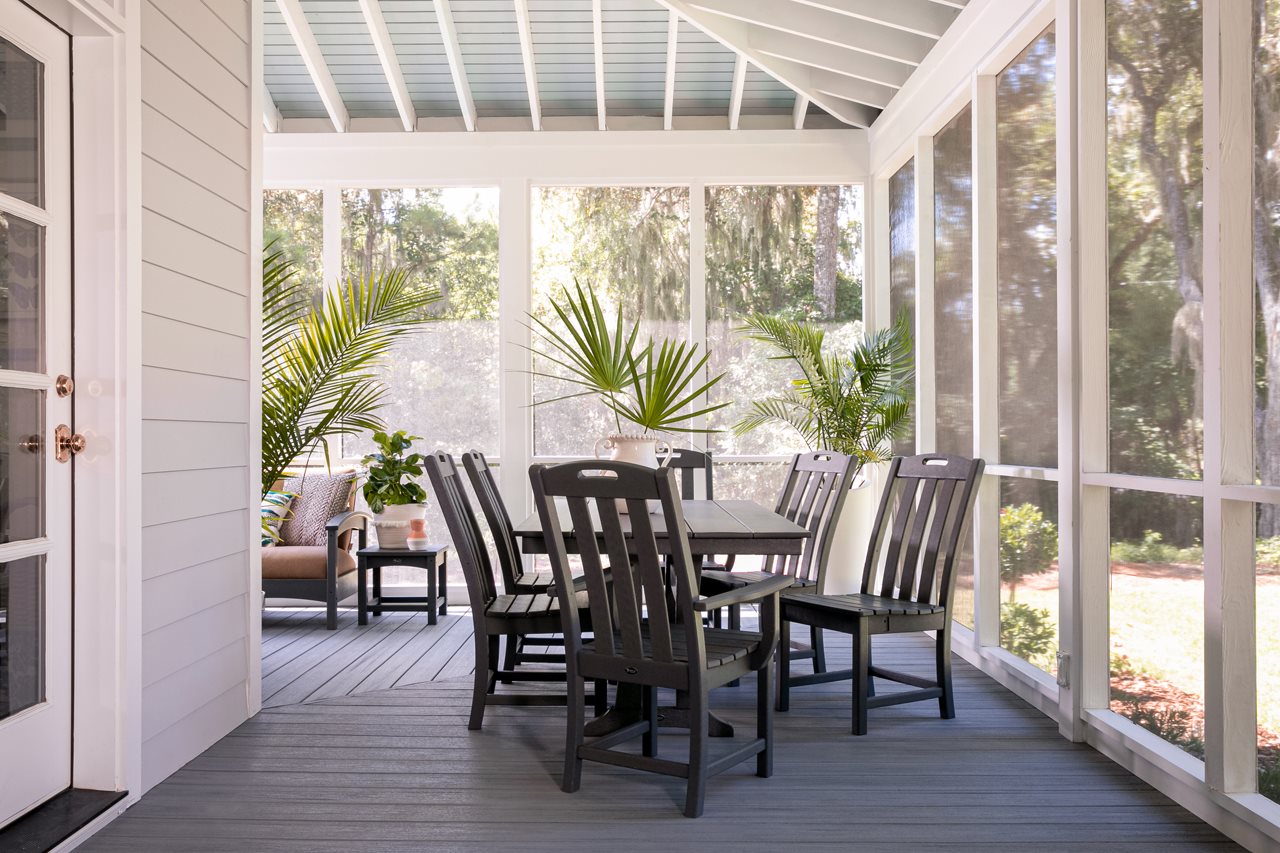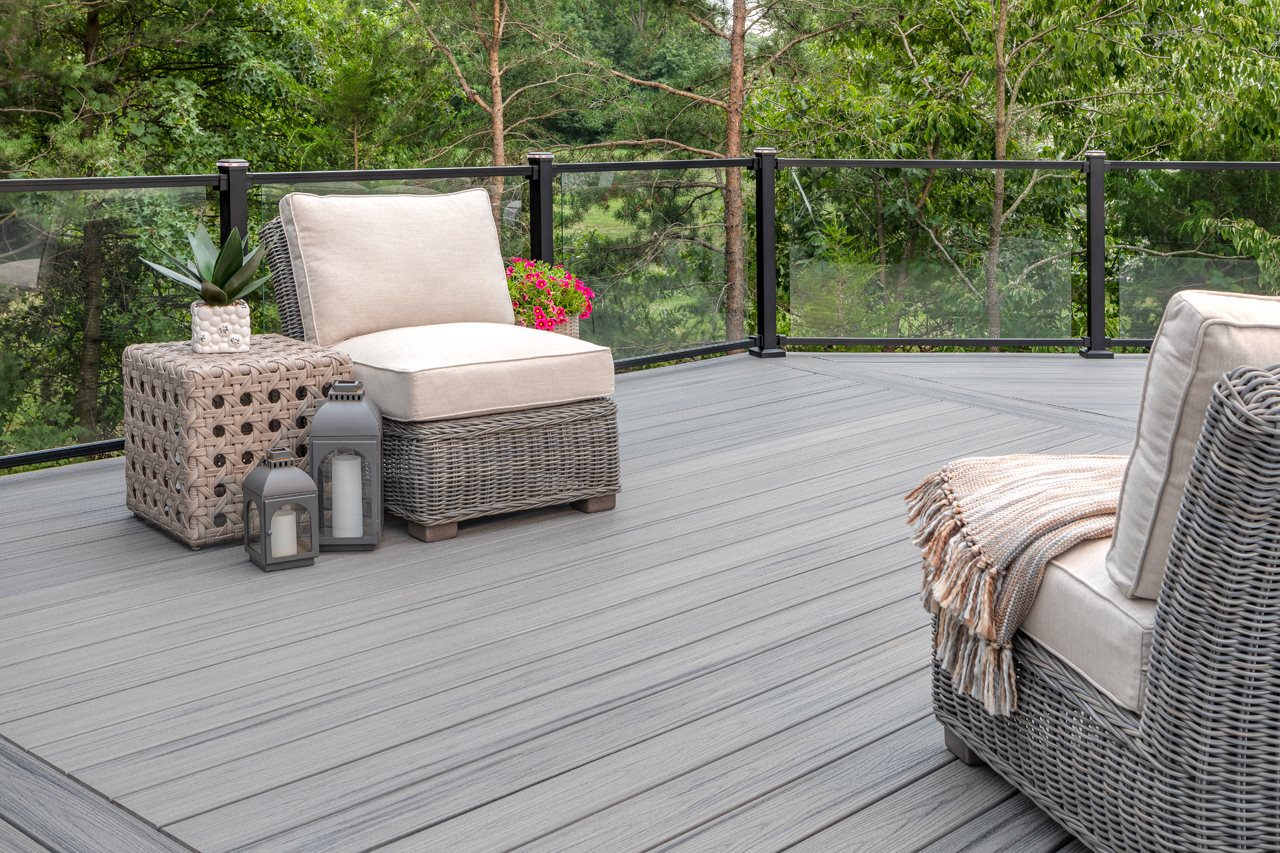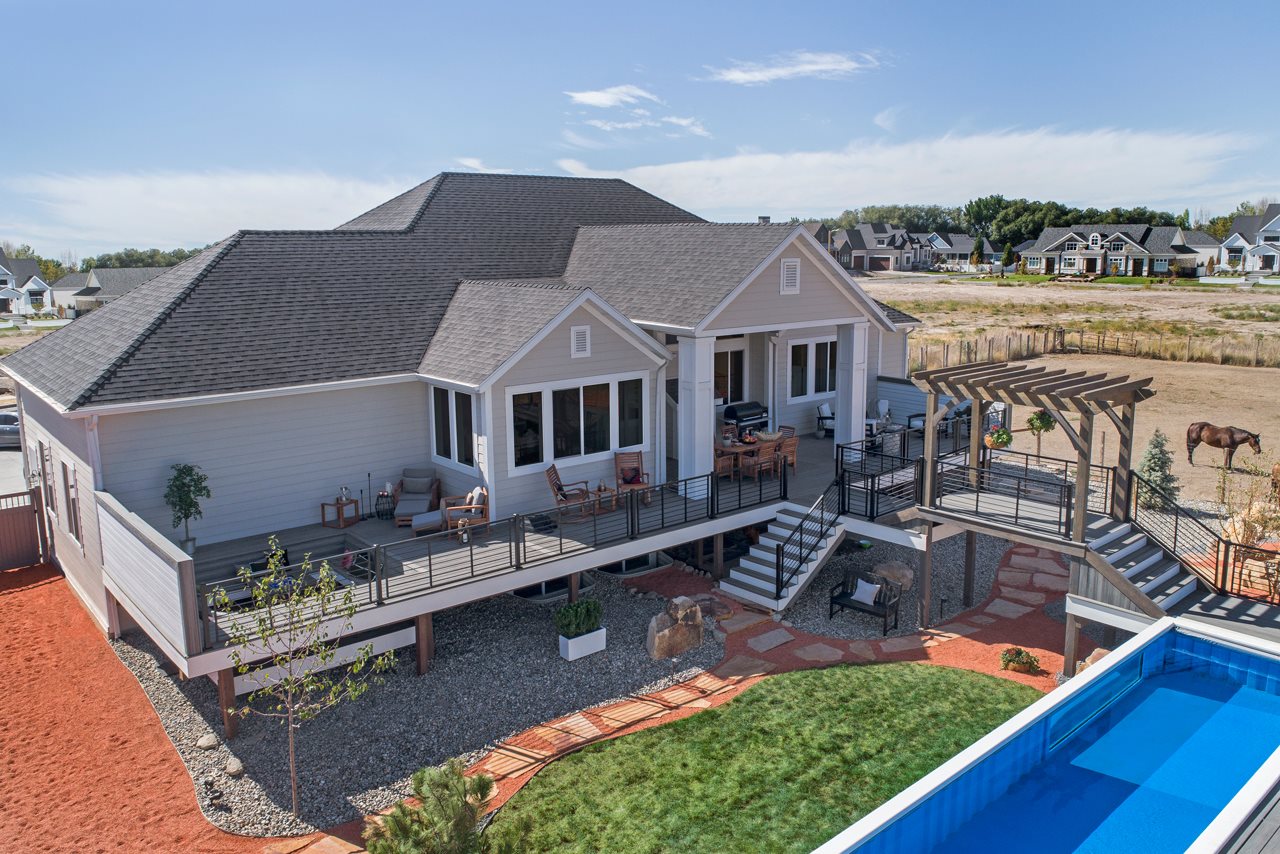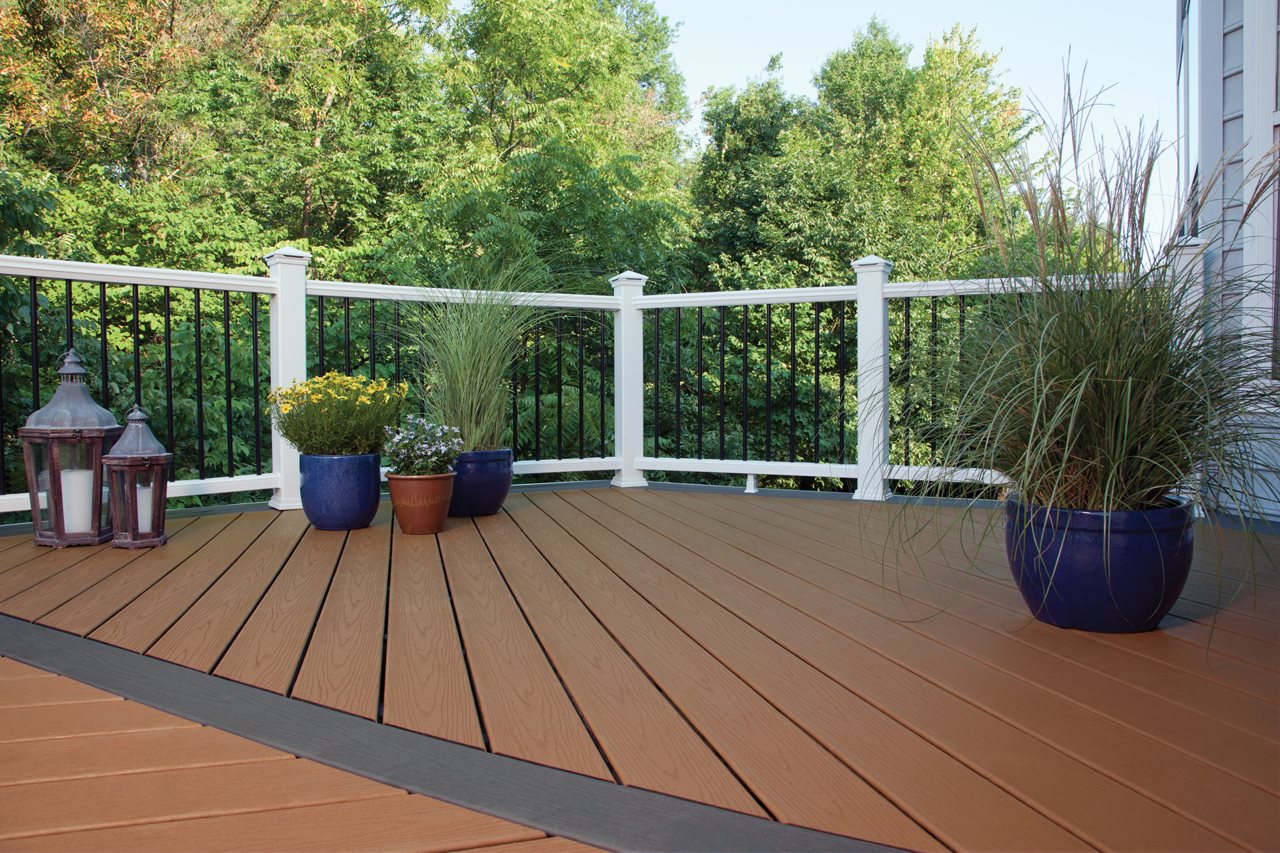2021-03-31T17:31:00
(BPT) – –

2021-03-31T18:11:06
(BPT) – After months of cautionary travel and shelving vacation plans, people, especially those with families at home, are researching how they can indulge their wanderlust safely again. The goal is to enjoy a vacation in a responsible manner, creating memories while keeping yourself and others safe.
Heading to Coastal Mississippi: The Secret Coast is a good option as its location in the Southern United States brings warm weather throughout the year, plus access to the Gulf and plentiful opportunity to explore outdoors. Travel interest is up for The Secret Coast as its 62 miles of scenic shoreline dotted by unique coastal communities boast Southern charm and hospitality. Many people are choosing to discover this destination based on the Coastal Mississippi Promise of Health and Safety, which pledges that visitors can expect all hospitality partners to follow recommendations from leading health agencies and regional health care authorities to ensure everyone’s safety.
“While we welcome visitors to explore Coastal Mississippi and safely create lasting memories, we encourage travelers to make informed decisions when planning their vacations,” says Milton Segarra, CEO of Coastal Mississippi.
In addition to visiting a destination that prioritizes public health, it’s wise to take additional steps to keep your travel group and others safe. To help you do that, here are some of the most effective ways to vacation responsibly:
Mask up
Everyone 2 years and older should wear masks while in public, per Centers for Disease Control and Prevention recommendation. This includes when you’re on vacation, so pack extra masks and plan on wearing them indoors — such as at shops or attractions — as well as outdoors if you’re within six feet of another person not in your household. You might even consider ordering special masks that commemorate your group trip rather than the traditional T-shirt. They make for great vacation photographs!
Know and follow local restrictions
Although the federal government has provided best overall practices for staying safe during the pandemic, specific regulations may vary depending on where you travel. Take the time to research your destination and what specific protocols they may require. Then talk with your travel group ahead of time so you can all be proactive in following these rules and keeping everyone safe.
Sanitize frequently
Keep hands clean by washing regularly and avoid touching your face. Wash with soap and water for 20 seconds, or about the length of time to sing “Happy Birthday” twice. When soap and water aren’t available, hand sanitizer with at least 60% alcohol is a good option. In addition to hands, consider sanitizing surfaces before use, such as the tray table if flying on your vacation. It may have been sanitized already, but this gives you peace of mind and limits germ-spread even more.
Enjoy outdoor spaces
When planning your itinerary, consider ideas that are outdoors. Fresh air and space to social distance is safer and can make your vacation more enjoyable. From beautiful bayous and bays to the longest man-made beach in the nation, Coastal Mississippi offers an array of outdoor adventures, including exploring the Gulf Islands National Seashore at Davis Bayou, water paddling along scenic blueways, fishing trips, sunset boat excursions and much more.
Explore accommodations
You want to be comfortable where you stay and confident it’s clean, so spend some time researching what different accommodations are doing to keep guests safe. Then, book what feels right for you, whether that be a sprawling resort, private bed and breakfast, or unique boutique hotel. Featuring four modern, floating cabins complete with wet bars, and private, outdoor showers, Hotel Beatnik in Mississippi’s Ocean Springs Creative District offers a new option for travelers.
Book tickets early for attractions
Many attractions are altering procedures and rules to keep wellness top of mind. Call and ask about what they’re doing to keep everyone safe and if there are new occupancy limits. You may want to book tickets early because fewer are being sold so fewer people are in a particular attraction at once. The newly opened Mississippi Aquarium in Coastal Mississippi is adhering to recommended guidelines and provides an opportunity for visitors to explore more than 80,000 square feet of exhibits connected by landscaped walkways with plantings representing all seven Physiographic Regions of Mississippi.
Stay home if you feel sick
Finally, if you feel sick, stay home. Many accommodations and attractions will refund your money or offer vouchers for use in the future. That way you can go when you’re feeling well and can fully enjoy your trip while also helping to limit the spread of illness.

2021-03-31T11:57:00
(BPT) – Thinking about a colonoscopy may make you uncomfortable, and maybe even a little worried — especially if you have never had one before. But a colonoscopy is a relatively simple procedure that may help save your life by identifying the early signs of colorectal cancer.
While you may have delayed some medical visits because of the pandemic, you can rest assured that health care providers have worked hard to help ensure that procedures like colonoscopies are conducted safely. Putting screenings off, in contrast, may be dangerous: Delayed cancer screenings during the initial months of the COVID-19 pandemic are estimated to result in 10,000 excess colorectal and breast cancer deaths.
Why screening is important
It’s a good reminder that the U.S. Preventive Services Task Force recommends adults age 50 to 75 be screened for colorectal cancer. According to the American Cancer Society, colorectal cancer is the third-leading cause of cancer-related deaths in the U.S. — and early in the disease, there are often no symptoms.
“Too often, when people begin experiencing symptoms of colorectal cancer, the disease has advanced to a point where it’s much more difficult to treat,” said Dr. Philip Painter, chief medical officer, UnitedHealthcare Medicare and Retirement. “That’s why it’s so important to get screened at age 50 if you have no risk factors — and earlier, if you do.”
People who are longtime smokers, overweight, physically inactive and those with a family history of colorectal cancer in a parent, sibling or child are at an increased risk.
Nearly 148,000 new cases of colorectal cancer were expected to be diagnosed in the U.S. in 2020. About 80,000 of those cases were estimated to be among adults 65 and older. And yet only 61% of Americans age 50 and older have had a colonoscopy.
Colonoscopy prep
You may be asked to begin a procedure to help prepare the bowel and colon for examination.
Your doctor will likely instruct you to cut out fiber from your diet two days before your colonoscopy. One day before, you will eat no solid foods, and no liquids that are orange or red. You may consume clear juices, gelatins, popsicles, clear broth and coffee or tea without creamer. The evening or morning before your exam, you will drink a liquid that will induce bowel movements.
You may find that the preparation for a colonoscopy is not as unpleasant as you have heard. In recent years, colon-cleansing solutions have become better tasting, and lower amounts of the laxative solution are sometimes used.
The procedure itself is not lengthy — typically, about 30 to 60 minutes. Sedation is usually recommended, and you may feel slight cramping during the exam, but many may feel nothing at all.
If your results are negative, doctors typically recommend another colonoscopy in 10 years.
“Taking preventive steps like getting your colonoscopy can literally save your life,” Dr. Painter said. “If you are over 50 and have not yet had the test, it’s best to get that scheduled as soon as possible.”
Still have questions or concerns? Talk to your health care team. They are there to help.

2021-03-31T06:01:00
(BPT) – It has been a challenging year, full of anxiety about health and safety. While there are signs of improvement, the pandemic is still ongoing, which means that it’s important to continue to take proactive steps to help protect you and your family from COVID-19 — as well as from the flu and other illnesses. Fortunately, there are tools available to help you stay on top of what’s going on in your local community, learn best practices for killing germs in your home, and quickly assess the risk of traveling to other areas in the U.S.
Here are some easy methods for tracking COVID-19 levels and additional steps to help protect you and your family from the spread of the virus and other illness-causing germs.
Know the risks in your own community
Just as you rely on weather reports for warnings about safety hazards where you live, wouldn’t it be great if there were a free, easy-to-use tool showing the local incidence levels for the flu and COVID-19?
Now there is. The free Lysol Germ-Cast™ app shows up-to-date COVID-19 infection rates on a county-by-county basis, plus a three-week projection for flu inflection rates. The app uses data powered by public health company Kinsa, applying machine learning and AI to identify hotspots before they emerge, which creates an accurate early warning system for contagious illness in your area.
Knowing the level of risk right where you live can help you make informed decisions to stay vigilant and to help keep your family safe and healthy. This innovative app also provides useful tips, tricks and guidance to help stop the spread of illness-causing germs.
Prioritize cleaning and disinfecting your home
Cleaning and disinfecting your home is one of the best ways to help protect your family from illness-causing germs. While you may think your home looks clean, the truth is that decluttering does not equal disinfection, and even a clean looking home may contain illness-causing bacteria and viruses.
In fact, one study[1] about the transmission of viruses in households found that while most people (65%) say they clean to make their house look and smell clean, 25% of surfaces tested in those same homes were found to have moderate or heavy bacterial growth.
To reduce viruses and bacteria in your home, focus on disinfecting high-touch surfaces and spaces with heavy traffic. Here are the top three areas to prioritize:
In the study mentioned above, kitchen cloths were the most contaminated, with 86% having moderate or heavy bacterial growth, with kitchen taps the second-most contaminated (52%). Swap out kitchen towels and cloths frequently, and use laundry sanitizer to get rid of lingering bacteria[2].
Additionally, look to regularly clean and disinfect all other high-touch objects and surfaces in the kitchen, such as light switches, cabinet doors, drawer and fridge handles, faucets, countertops[3] and trash containers.
Between the high traffic and the moist environment that germs love, your home bathroom is a space that needs extra care. Make sure that disinfecting the sink, counter, bathtub, faucet, shower area, doorknob and toilet handle are all a part of your cleaning and disinfecting game plan.
Check manufacturers’ websites for your electronic items such as phones, remotes, game consoles, tablets and computers to follow their instructions on safe cleaning and disinfecting of those frequently used items — then plan to clean and disinfect them often.
Lysol® Disinfecting Wipes kill 99.9% of germs when used as directed on all these and other high-touch areas.
Take precautions prior to and during travel
While more individuals are slowly opening their circles and thinking about travel in anticipation of a decrease in COVID cases, it’s important that people don’t let their guard down too soon and continue to take precautions if they do decide to travel during the pandemic.
Prior to traveling, use a tool that tracks COVID incidence levels like Lysol Germ-Cast™ to ensure you have fully assessed the risk involved with travelling to that area.
When in transit, make sure you are vigilant of your surroundings and frequently touched areas, such as seats and handrails, turnstiles, bathroom faucets and buttons on vending machines and elevators. To disinfect these areas while on-the-go, consider Lysol® Disinfectant Spray To Go® and Lysol® Disinfecting Wipes To-Go Pack[4] for convenient travel-sized options that still get the job done.
For more daily tips, tricks and guidance to help stop the spread of illness-causing germs, visit lysol.com/germcast-app or download the Lysol Germ-Cast™ app from the app store.
[1] Journal of Infection Prevention. “The survival of influenza A(H1N1)pdm09 virus on 4 household surfaces”; Published April 2014.
[2] Use as directed.
[3] Use as directed. Rinse food contact surfaces with potable water.
[4] Use as directed. Not recommended for use on brass, copper or aluminum surfaces.

2021-03-31T13:01:01
(BPT) – The National Health Service Corps (NHSC), a federal government program administered by the Health Resources and Services Administration (HRSA), within the U.S. Department of Health and Human Services (HHS), received a historic $800 million from the American Rescue Plan Act signed into law by President Biden to support the largest clinician workforce in the program’s nearly 50-year history. The NHSC Loan Repayment Program helps medical, dental, and mental and behavioral health clinicians pay off their student loan debt in exchange for working in a Health Professional Shortage Area (HPSA) — or a defined geographic area with too few providers.
“This historic program funding for NHSC means that we will provide a record number of loan repayment awards for eligible clinicians,” says Dr. Luis Padilla, associate administrator of HRSA’s Bureau of Health Workforce (BHW) and director of NHSC. “Every community has felt COVID-19’s effects and this will allow NHSC applicants to serve in communities where they may not have been competitive to receive an award before due to sites with lower HPSA scores.”
The NHSC is currently taking applications for three NHSC Loan Repayment Programs until May 6, 2021. Eligible disciplines include physicians, nurse practitioners, physician assistants, dentists, behavioral/mental health clinicians, and more. Qualified clinicians may receive up to $100,000 in educational loan repayment, depending on the award.
Providers may apply for one of three NHSC loan repayment programs:
1) NHSC Loan Repayment Program
This two-year commitment program supports clinicians with up to $50,000 to pay off their student loan debt in exchange for service at an NHSC-approved site.
2) NHSC Substance Use Disorder (SUD) Workforce Loan Repayment Program
This three-year commitment supports the recruitment and retention of health professionals with up to $75,000. Providers must be working to combat the nation’s opioid crisis, expand access to evidence-based, medication-assisted treatment, and prevent overdose deaths in underserved areas. Applicants must work at an NHSC-approved SUD treatment facility located in a HPSA.
3) NHSC Rural Community Loan Repayment Program
This three-year commitment addresses the pressing need for qualified SUD providers in rural communities and awards up to $100,000 in loan repayment funds. Applicants must work at a NHSC-approved SUD treatment facility located in a rural HPSA.
Making an Impact
Currently, over 17 million people receive care from the more than 16,000-strong NHSC network of clinicians serving in urban, rural and tribal areas. Since the NHSC began, more than 63,000 primary care medical, dental, and mental and behavioral health professionals have served. By working with the NHSC, clinicians can help ensure access to health care for everyone regardless of their ability to pay, prevent disease and illness, and care for the nation’s most vulnerable people.
To learn more and apply for NHSC’s Loan Repayment Program, visit NHSC.HRSA.gov/loan-repayment/.

2021-03-31T08:01:01
(BPT) – Much like electricity in the 1930s, internet connectivity is a modern necessity that many people take for granted. However, more than 21 million people, mostly in rural areas, don’t have essential access.
For instance, slow internet access makes it hard for Matt Barnard, a farmer who grows corn and soybeans in Illinois, to use the data he collects from his crops.
“We get home and we try to upload that information onto whatever platform we’re using to manipulate it or share it, and it gets really, really tough,” he says. “You might start it at night and hope that it is done in the morning and that it didn’t time out.”
Farmers’ families also struggle with poor internet access. Barnard’s children were forced to attend school remotely during the pandemic, and his wife, who relies on Zoom to work from home, finds it difficult to telecommute to her job with a weak broadband network.
These various challenges limit opportunities for people in rural areas. Syngenta, a global agribusiness, is one of the many companies helping expand broadband access to areas across the country, helping farmers and others connect with people in their communities and around the world.
Here are a few ways robust access can help strengthen rural communities:
Allow farmers to make better decisions
Many corporations now rely on 5G and IoT capabilities to obtain more data and make better business decisions. Farmers already have the tools for smart data collection but better access to high speed internet allows them to more efficiently use those tools and put that data to work — this means farmers can better manage crop inputs, reduce their water waste and reduce pesticide use.
Expand the economy and create jobs
The internet can grant anyone access to digital consumers. And with cheap online advertising, starting a business is now easier than ever. Broadband connection can give people in rural areas more of the tools and resources they need to start businesses that generate economic activity in their communities.
Open educational opportunities
For some families in rural communities, pursuing higher education can be more challenging. Some don’t have the financial means to move away from their families to attend school. Agriculture is full of technical jobs, so getting an education provides a competitive advantage.
With enhanced internet connectivity, those wishing to pursue postsecondary education can have a better opportunity to do so, especially as colleges, universities and trade schools offer more online courses.
Provide broader access to health care
Hospitals and other medical facilities that exist in rural areas are sometimes limited in their specializations and often required long drives to reach. But with expanded broadband access, medical facilities in rural communities can grant better access to these specialists via telehealth and online referrals. Patients in rural areas can also pay medical bills and schedule appointments much easier when they can do it from the comfort of their computer.
Create a more connected world for everyone
The internet is a powerful tool and has enhanced the lives of countless people around the world. It doesn’t matter where you live; you should be able to have full broadband access to the internet whether you’re in an urban or rural environment. And given all the benefits it can provide not just rural communities, but society, there are countless incentives for expanding access.
For more information on how Syngenta is helping expand broadband access to rural areas, head to www.syngentathrive.com

2021-03-31T14:01:01
(BPT) – Face it — spending more time at home means spending more time cleaning our homes. And at a time when everyone is more focused on hygiene and sanitation, keeping everything and everyone clean enough seems like a lot of work.
But there are steps you can take to clean smarter, not harder. With some planning — and up-to-date technology — it’s possible to create cleaner spaces without creating more work.
Here are some steps you can follow to improve the cleanliness of your home and everyone in it.
1. Identify “hot spots”
First, choose a few specific spots to focus on. For example, what are the most highly used or most trafficked areas? Which parts of your home are you constantly aware need more cleaning?
Instead of getting overwhelmed by having to sanitize your entire home, finding just a few areas where you see the most potential for improvement helps you focus on manageable changes.
For example, the main entry area is a likely hot spot. If you don’t have a separate mud room, foyer or entry closet, try to create an area using bins, hooks and shelves where everyone can easily shed outdoor items like shoes, jackets and backpacks in one place. A small bin can hold items like phones and keys that you can sanitize before bringing further into the house.
2. Upgrade to touchless
Because it’s so important to keep your family’s food clean, your kitchen is another potential hot spot. One great technological advance to keep kitchens more hygienic is the touchless faucet. Washing your hands and using water without touching faucet handles means fewer chances of spreading germs throughout your home.
Installing a touchless or voice-activated faucet like one from Kohler means you’ve also got a voice-controlled kitchen assistant available to follow commands to turn water on and off, plus dispensing measured amounts of water. You can cut down on cross-contamination and make food prep easier by using your faucet almost like a sous chef — with preset amounts for the faucet to automatically fill up a pot of water or a coffee pot for you, hands-free.
Bonus feature: Using a Kohler Konnect faucet, you can access a new handwashing command through Alexa and Google. Simply ask for the handwashing program, and the virtual assistant will not only dispense water intermittently, allowing time to lather up with soap, but will also talk you (and especially your kids!) through a thorough 20-second handwashing routine.
3. Simplify toilet cleaning
Your home’s bathroom is another area that needs constant cleaning — and sanitizing the toilet probably tops the list. In a recent Kohler survey, 42% of American consumers admitted that toilet cleaning was one of their most disliked chores.
Why not make it easier? Thanks to the Kohler ContinuousClean cleaning system, your toilet bowl can stay cleaner longer. Paired with the company’s newest flush technology, Revolution 360, ContinuousClean raises toilet cleanliness to a whole new level.
The factory-installed system housed in the toilet tank dispenses a consistent dosage of cleaner during each flush to keep the bowl clean for up to two months. You simply place your choice of cleaning tablet in the designated compartment and push a button. You can adjust the dispensing of the cleaning solution based on three custom settings, and the Kohler-designed system does all work from there.
To explore the latest solutions for improving the cleanliness of your home, visit Kohler.com.

2021-03-31T08:01:01
(BPT) – There’s nothing quite like owning a home. There’s the pride of achieving a financial goal. There’s the comfort of having a sanctuary and space of your own in which to build a lifetime of memories.
Occasionally, as many homeowners can attest to, there’s also the element of surprise when things suddenly break — like appliances, the furnace or water heater — and need to be fixed or replaced. Water damage is the most common — and unwanted — surprise for homeowners. According to Mercury Insurance, water-related damages accounted for more than 45% of its homeowners insurance claims in 2020, resulting in $160 million in property damage.
“A water leak can happen at any time, so it’s important for homeowners to routinely check for potential sources to help combat this issue,” said Christopher O’Rourke, vice president of property claims at Mercury Insurance. “It’s also important to address the cause of any brown spots on the ceiling or bulges in the walls immediately — these usually indicate a leak or water build-up and most homeowners insurance policies don’t cover long-term leaks. Left untreated, this can lead to extensive damage.”
Show your home a little TLC to protect against water damage by inspecting these three areas in and around it.
1. The bathroom
Periodically check the pipes underneath the bathroom sink for cracks or leaks. A leaky pipe can be a sign of a larger issue that might eventually cause your pipes to burst, like high water pressure or corrosion. Regardless of the cause, consult with a professional to have them assess and fix it.
The seal created by the caulk around your sink, tub and shower helps prevent water from seeping into spaces where it doesn’t belong, but it won’t last forever. Ensure the caulk isn’t worn or cracked, and apply a new layer if needed.
If water leaks from the base of your toilet, or it wobbles when you sit, it’s time to replace the wax ring. Wax rings help form a watertight seal between the bottom of a toilet and the sewer pipe. The ring usually lasts the life of the toilet, but it’s possible for it to dry out and fail so pay attention to malfunction signs.
“If you have multiple bathrooms, some might not get used as often as others. Once a week, make a point of turning faucets on and off, and flushing toilets to ensure water continues flowing through the pipes properly,” O’Rourke adds.
2. The kitchen
Just like in the bathroom, the pipes beneath the kitchen sink need to be checked regularly for leaks and cracks.
Kitchen appliances with hoses that connect to your water supply — refrigerators with icemakers or water dispensers, and dishwashers — are another potential source for leaks. Rubber hoses can wear out, blister or crack, and will need to be replaced over time. Consider replacing this type of hose with a steel-braided version as these are less likely to fail.
Your washing machine probably isn’t in your kitchen, but be sure to inspect its hose as well. The hose connection can loosen during wash cycle vibrations, so check to ensure it’s tight.
3. The home’s exterior and roof
Be sure to keep rain gutters and downspouts free of debris to prevent clogs, and position downspouts to direct water away from the house.
Holes, cracks and gaps can be entry points for unwelcome water, which can cause rot or structural damage. Walk the perimeter of your home to look for imperfections in its facade. Inspect the condition of the weather stripping on your windows and doors to ensure they are properly sealed to keep out the elements. Also, look for damaged, missing or loose roof shingles, which can be seen from proper vantage points on the ground.
If you note any damage to your home’s exterior walls or your roof, consult with a professional to determine next steps to fix the spots where water can potentially enter your home.
O’Rourke also recommends that homeowners consider installing a water leak detection system. “Many leaks are hard to detect because some pipes are enclosed behind walls,” he said. “Smart home devices like water leak detection or shutoff systems can monitor for leaks around the clock, and some can automatically shut off the main water supply if a leak or burst pipe is identified. These types of devices can offer peace of mind and might even qualify you for an insurance discount.”

2021-03-31T13:31:00
(BPT) – Designing your dream deck doesn’t have to be daunting. An easy way to get started is by asking yourself how you’ll primarily use your deck. Whether you are looking to create the ultimate entertainment hub, a picturesque setting for al fresco dining, or a relaxing retreat for weekend rejuvenation, envisioning your space is a great first step in the process. From there, you can focus on the smaller details, such as color choice and traffic flow. To get some fresh ideas and bring your dream deck to life, follow these 10 tips from the experts at Decks.com.
Plan for the Way You Live

Design your deck around your passions and personality. If you fancy yourself the host with the most, emphasize entertaining and gathering spaces. If you’re an avid foodie, consider adding an outdoor kitchen to your plan. For ultimate relaxation, factor in a fire pit, water feature or container garden.
Consider Function and Traffic

Once your priorities are set, plan a deck that allows enough space for the activities you enjoy, along with comfortable traffic flow across the deck. Be sure to allow ample clearance for dining chairs, rocking chairs, hammocks and porch swings, as well as room for end tables, plants and accessories.
Choose Materials Wisely

When it comes time to select decking materials, do yourself a favor and consider composite. Extremely durable, eco-friendly and more affordable than ever, high-performance composite decking, such as Trex®, never requires sanding, staining or sealing, so you can spend more time enjoying your new outdoor oasis, rather than maintaining it.
Play with Shape, Size and Symmetry

Add pizzazz to your plan with angles or curves to make your deck feel truly custom. Try turning field boards on a diagonal and using a picture frame border to create visual contrast. Integrating boards in contrasting but complementary colors also makes a deck really pop.
Equip Your Deck with Entertaining Essentials

As the foodie phenomenon continues to thrive, outdoor cooking areas have evolved from stand-alone grills to fully appointed spaces with everything from full-size appliances to smokers, pizza ovens and integrated wine coolers. If you love to cook, plan accordingly for a lifetime of al fresco entertaining.
Frame Your Space

Railing adds safety and style to a deck. Optimize a great view with glass, cable or rod rail. Thin balusters finished in black also will optically blend with natural surroundings. To enhance privacy, opt for railings with thicker posts and tightly spaced balusters to visually obstruct sightlines.
Bridge the House and the Yard

Whether your deck is attached or separate from your house, make it an extension of your home by incorporating complementary colors and design elements. Use natural materials, such as stones, pavers or bricks to seamlessly transition between indoor and outdoor spaces.
Install Vertical Elements

To add visual interest, contrast horizontal decking with vertical components, such as railing, decorative skirting or overhead structures. If there is useable space beneath your deck, consider installing a deck drainage system, so the patio can serve as an all-weather outdoor retreat.
Throw in Some Shade

A relatively easy addition to any deck or yard, a pergola creates the look and feel of an outdoor room while adding a distinct architectural element. Of course, its main purpose is providing shade — essential for offering cool relief on hot, sunny days.
Take Advantage of Free Tools and Resources

As you plan your dream deck, be sure to check out the library of resources on Decks.com, including hundreds of free deck plans, online deck designer, materials cost calculator, and more. The site also offers a wide range of deck images for endless design inspiration.

2021-03-31T09:01:00
(BPT) – When it comes to choosing beautiful, functional lighting, the selections can appear endless and may be leaving you with no idea where to start.
If so, you’re not alone. Many homeowners mistakenly believe any fixture will do the same job, when in fact effective lighting design is something of an art. The right lighting elements can make your home more relaxing or energizing, boost your sense of well-being and make daily tasks easier, all while reflecting your personal taste. According to Statista, the desire for such improvements motivated 63% of U.S. consumers to plan changes to their home lighting over 2020-2021.
To assist such forward-thinking homeowners, Erin Hoover, director-design, Luxury Space for Kohler Co., offers the following suggestions on choosing ideal home lighting.
Factor in function. Ask yourself what you’d like your lighting to accomplish in the room you’re addressing. How is the room used? Do you need a main source of illumination for the space, or do you need to supplement that with decorative accents? Where do you need direct and indirect light?
Consider existing architecture. Even if you like an eclectic look (Pinterest and Instagram can be inspiration), you’ll want to at least partially align each fixture with the rest of your space in terms of form, line and/or color. In general, high ceilings work well with pendants, chandeliers and linear-style lighting and lower ceilings work better with flush or semi-flush fixtures and sconces. Your furniture layout may guide placement of chandeliers, linear style designs or pendants.
Stay savvy in the kitchen. Since most kitchens feature multiple light sources, Hoover recommends designating one fixture as your statement or focal piece, then choosing other functional and decorative accent pieces that align. “The other lighting doesn’t have to match, but should be a little simpler,” she says. “Make sure it’s the correct scale for your space and ceiling height,” Hutton continues. “Pendant or linear lighting is a good choice for kitchen islands and bars, and mixed metals are on trend with or without black or white accent finishes.” For added design flexibility, she notes, choose lighting that can be raised or lowered to easily adjust the height above bar areas, counters and islands. KOHLER Lighting also exclusively offers finishes that perfectly color match Kohler and Kallista fixtures and faucets.
Introduce style to your bathroom. Depending on your daily routines, you may want your bath to offer both bright, functional lighting (for grooming) and mood lighting (for relaxation). Popular layouts feature 7- to 9-inch sconces mounted on each side of a vanity mirror, or a larger single sconce placed on the wall overhead. In powder rooms where steam isn’t an issue, Hoover likes decorative Kohler sconces that feature linen-look woven shades; she also recommends installing dimmer switches. “If you have the ceiling height, I love a chandelier in a bathroom,” she adds. “A 20- to 24-inch chandelier may be better than a 30- to 36-inch one unless you have a very spacious bath with a ceiling height of more than nine feet. A larger pendant of 15 to 18 inches makes a statement over a freestanding tub if ceiling heights allow.”
Fit out your foyer. Hoover recommends considering the height and depth of these important, first-impression rooms before deciding on the pendant, pendant cluster or chandelier that will make the right statement. “A single pendant can look stunning in a foyer that’s nine feet wide, whereas a 36-inch chandelier or two-tier chandelier is perfect in a grand foyer,” she advises.
Since your lighting design is so important to the beauty, functionality and overall mood of your home, it should never be an afterthought. Take time to choose from the wide variety of bright, beautiful styles available, then invest in the fixtures that will truly transform your living spaces. Find more information about KOHLER Lighting at us.Kohler.com.
